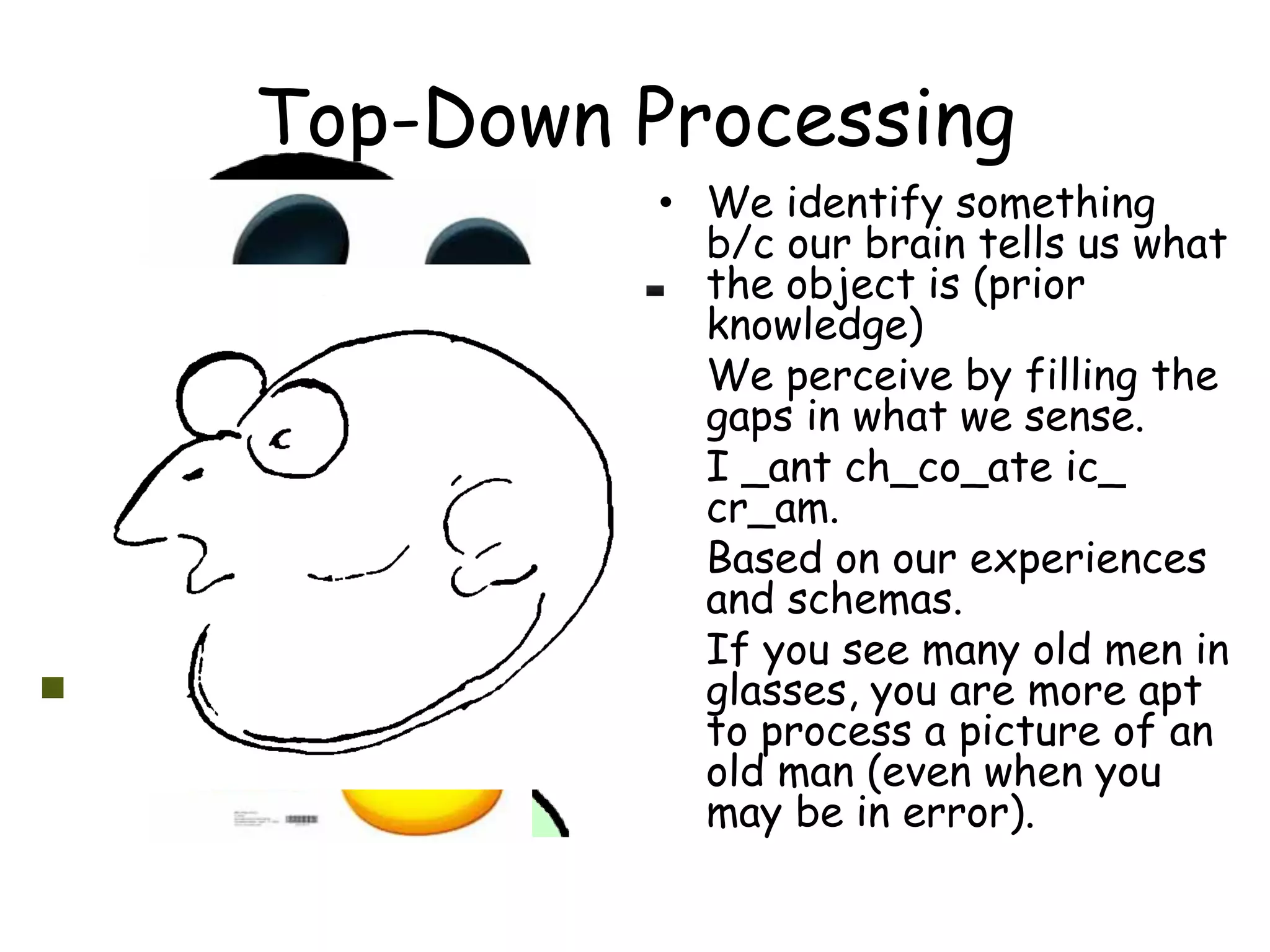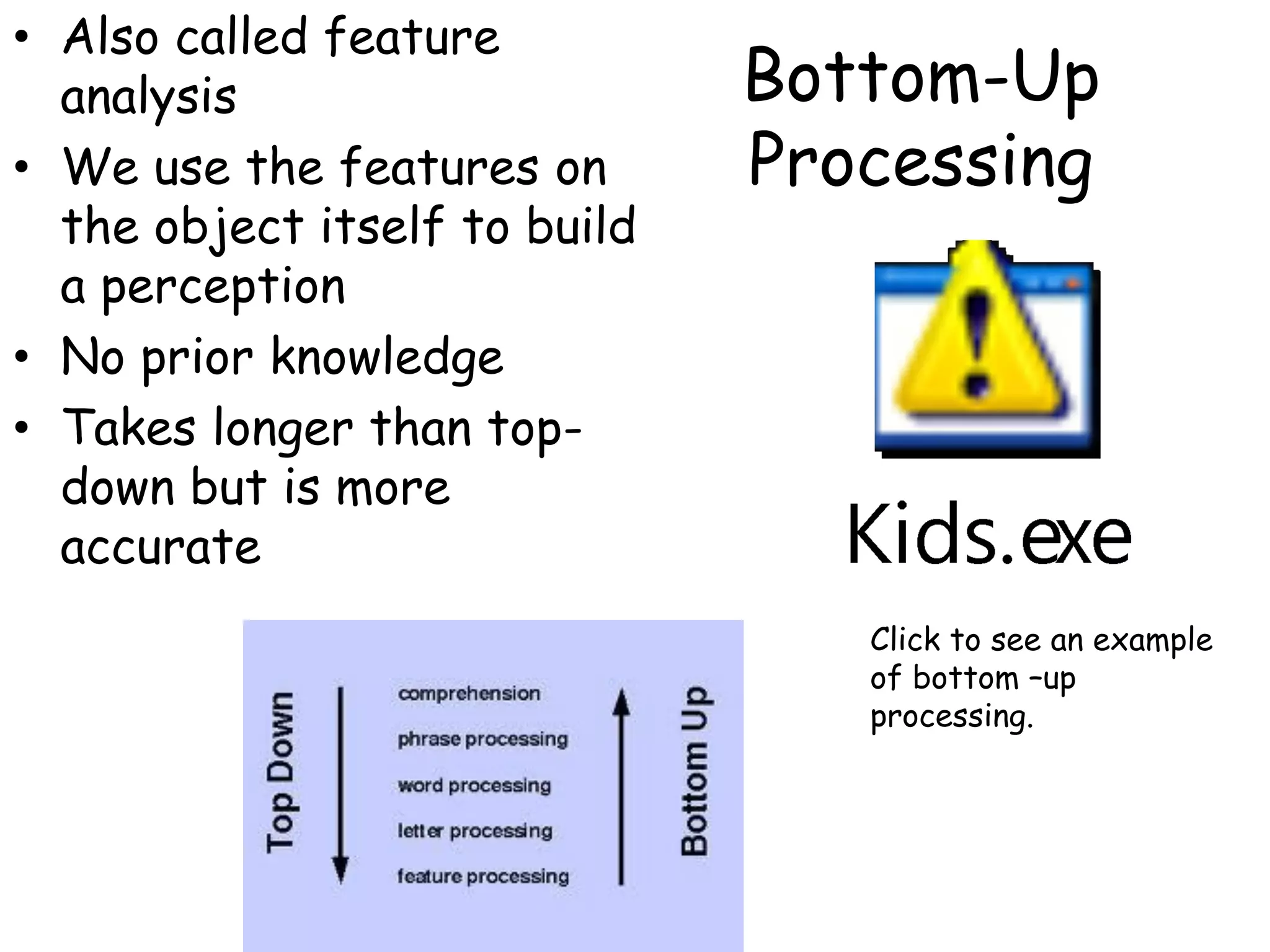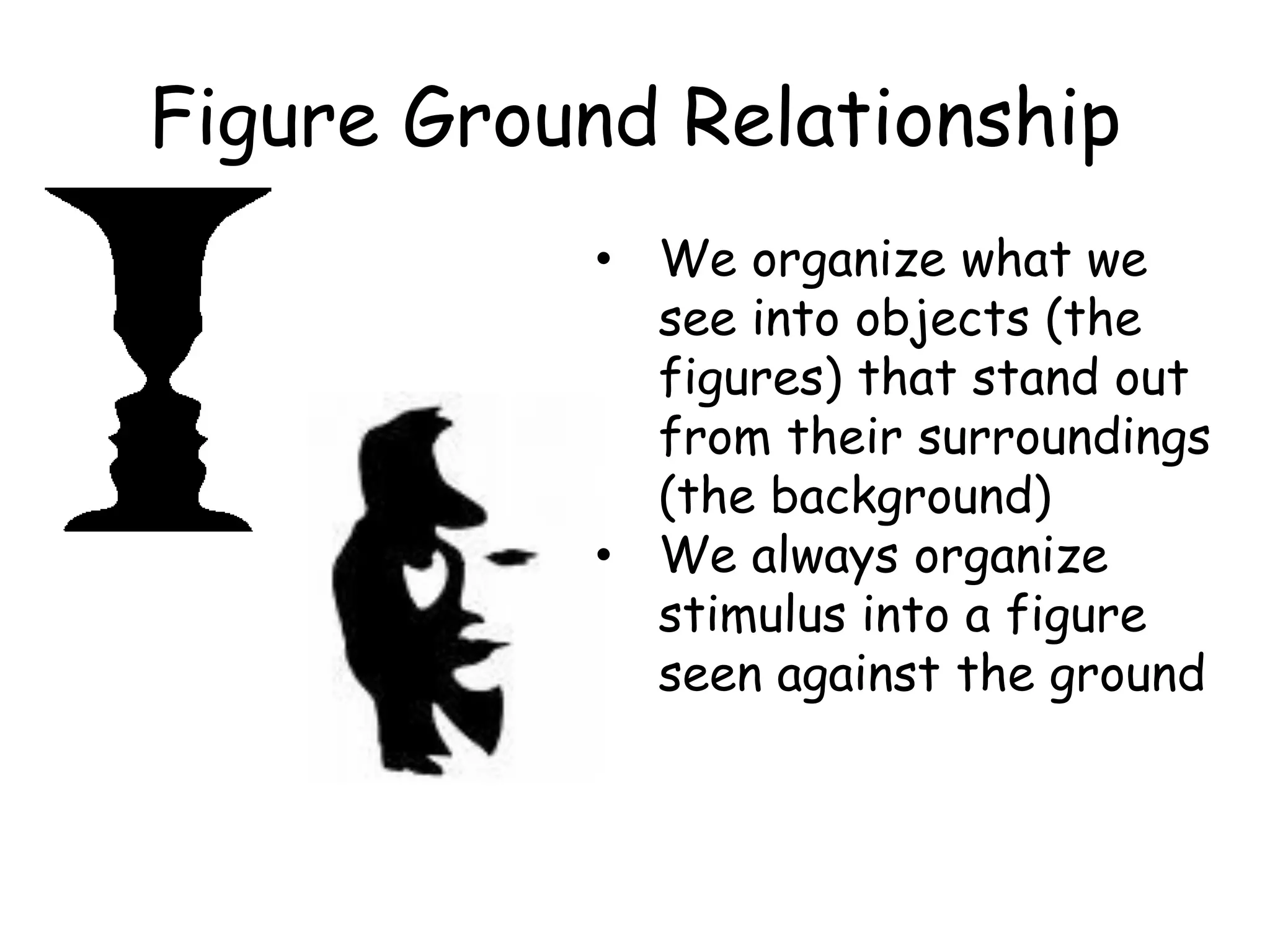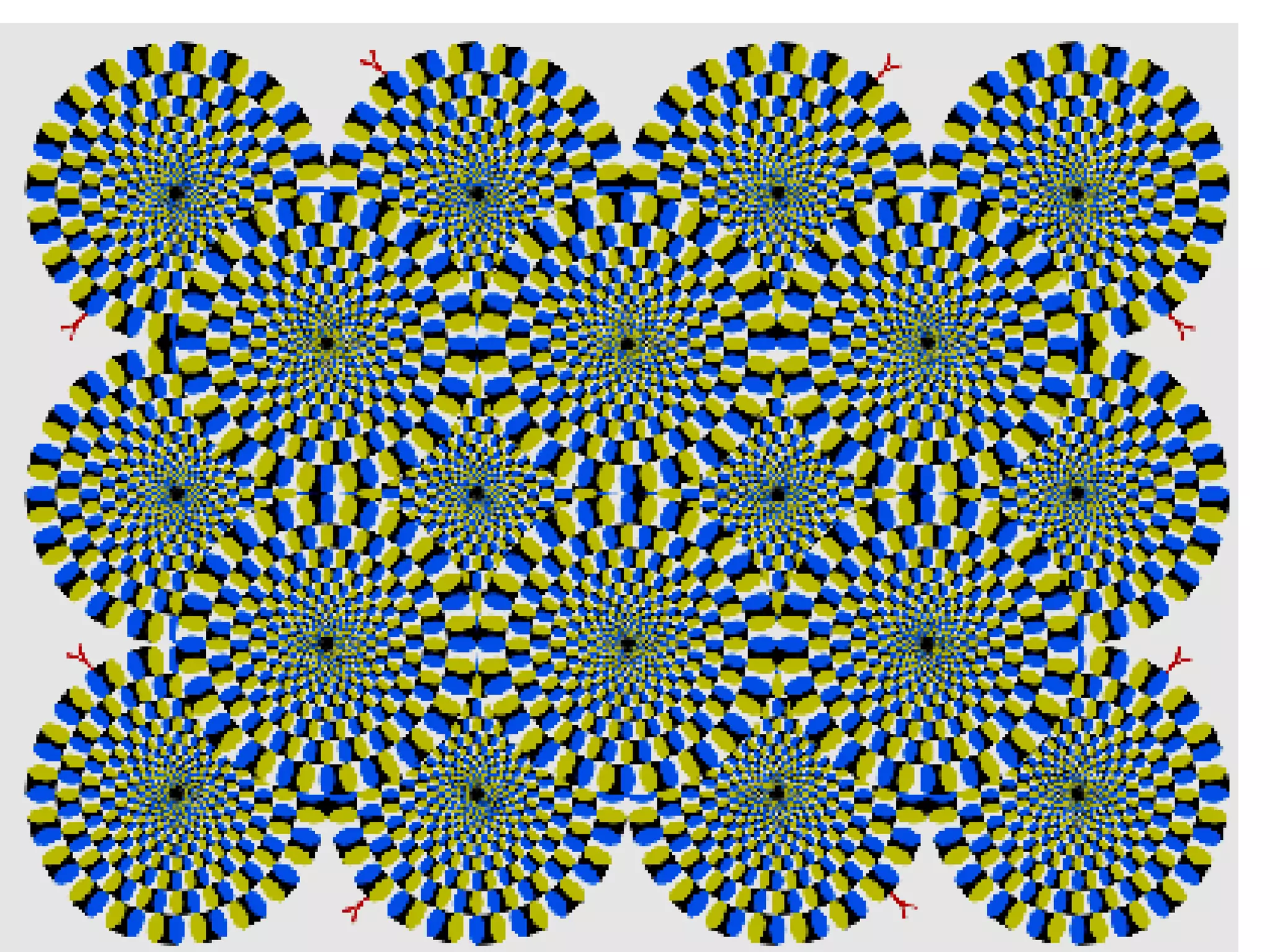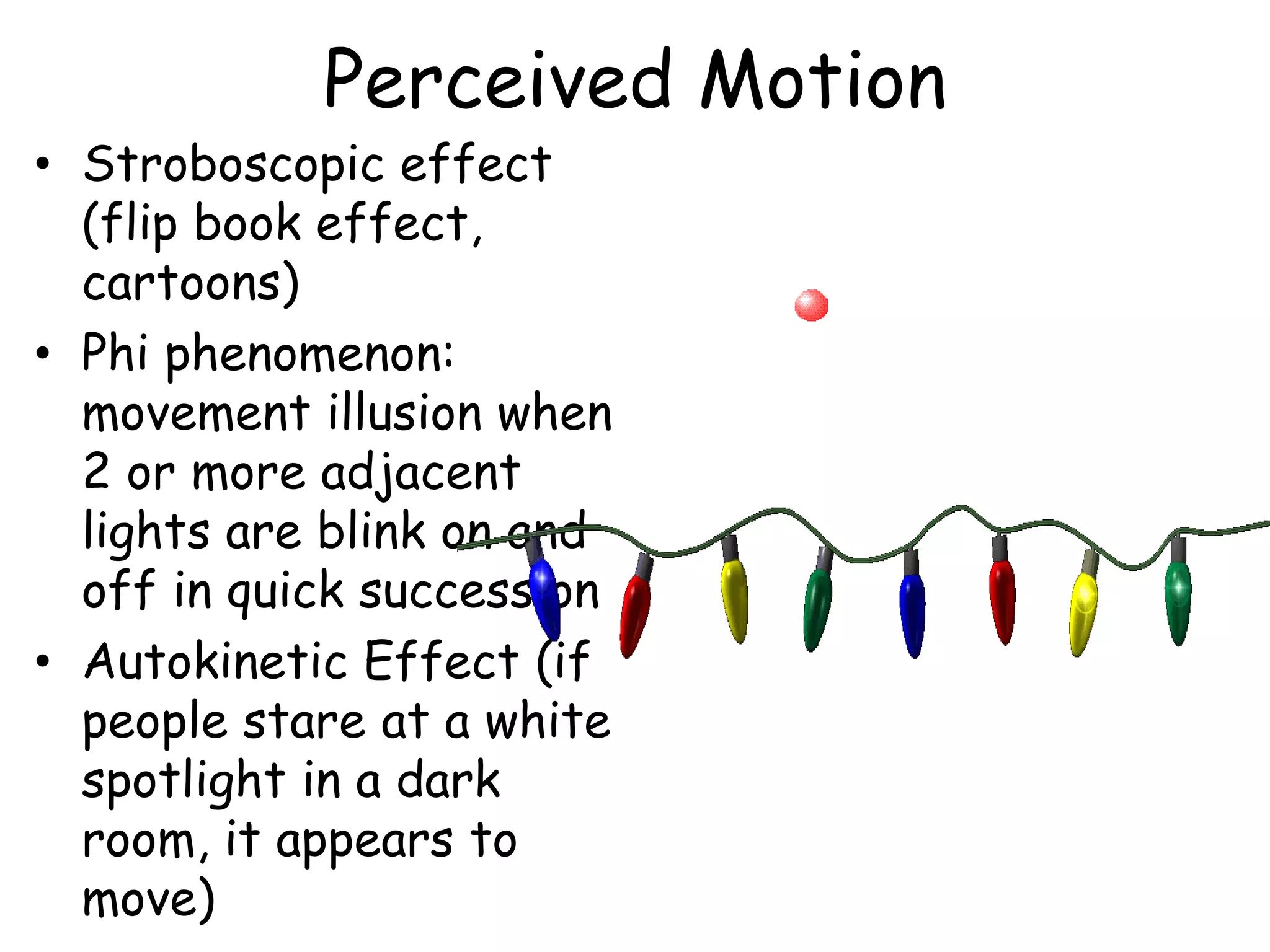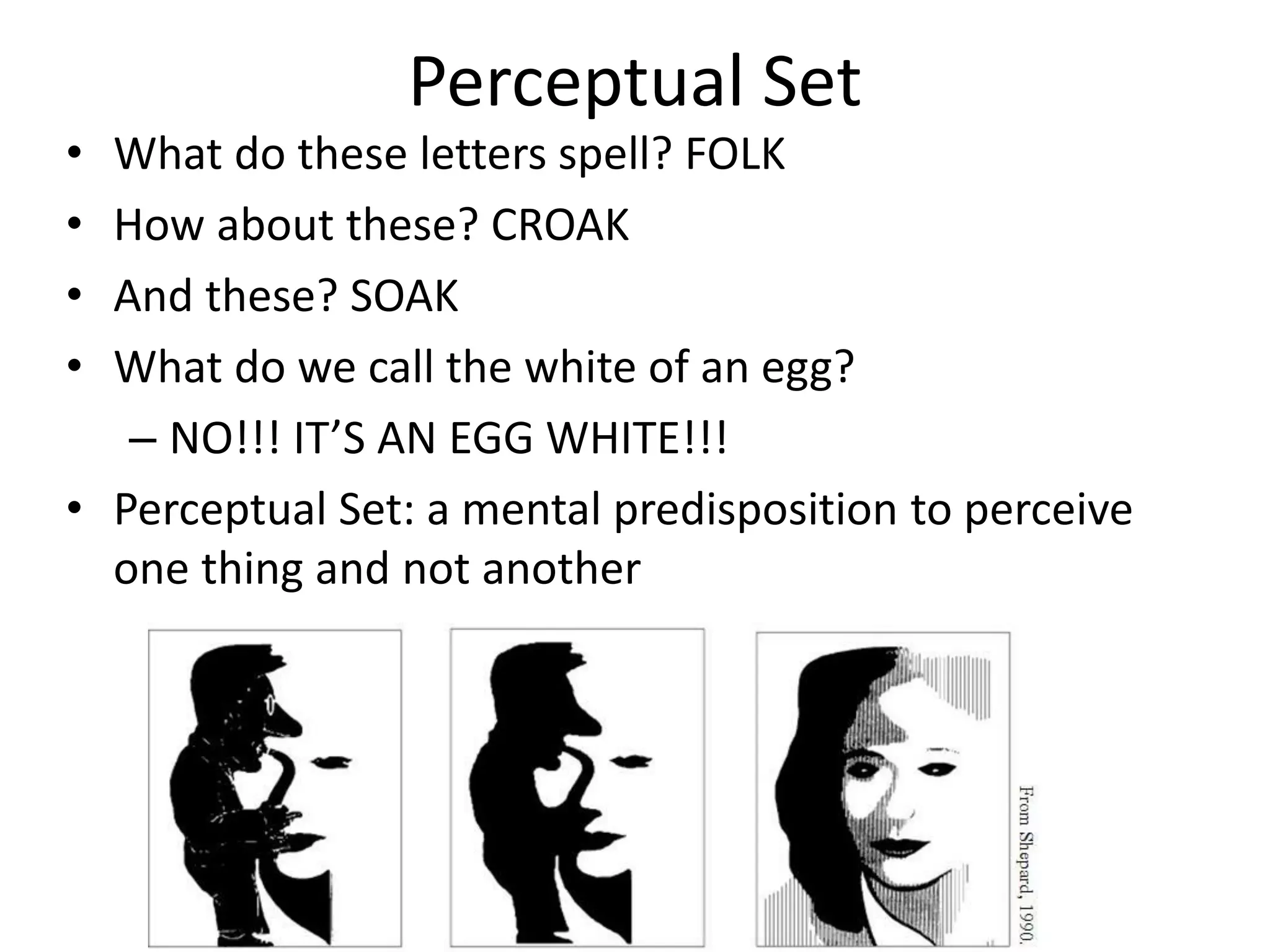The document discusses several key concepts in perception including selective attention, top-down and bottom-up processing, thresholds, Gestalt principles of perceptual organization, depth cues, motion perception, and perceptual constancy. It explains factors that influence what we perceive such as prior knowledge, proximity, similarity, and closure. Thresholds, signal detection theory, and Weber's law are introduced in the context of the minimum levels of stimulation needed to perceive changes.



